In the electronics manufacturing industry,cleaning of PCBs in SMT (Surface Mount Technology) factories is a critical step to ensure product quality and reliability. Residual flux, dust, or chemical contaminants can lead to short circuits, signal interference, or even equipment failure. This article will explore how to choose the optimal cleaning solution based on the classification of cleaning technologies and a comparison of their advantages and disadvantages, combined with the advanced practices of Hengtianyi Electronics.
Analysis of PCB Cleaning Methods in SMT Factories and the Outstanding Practices of Hengtianyi
1. Main Cleaning Methods for SMT PCBs
According to industry practices,the commonly used cleaning technologies in SMT factories can be categorized as follows:
Water-based Cleaning
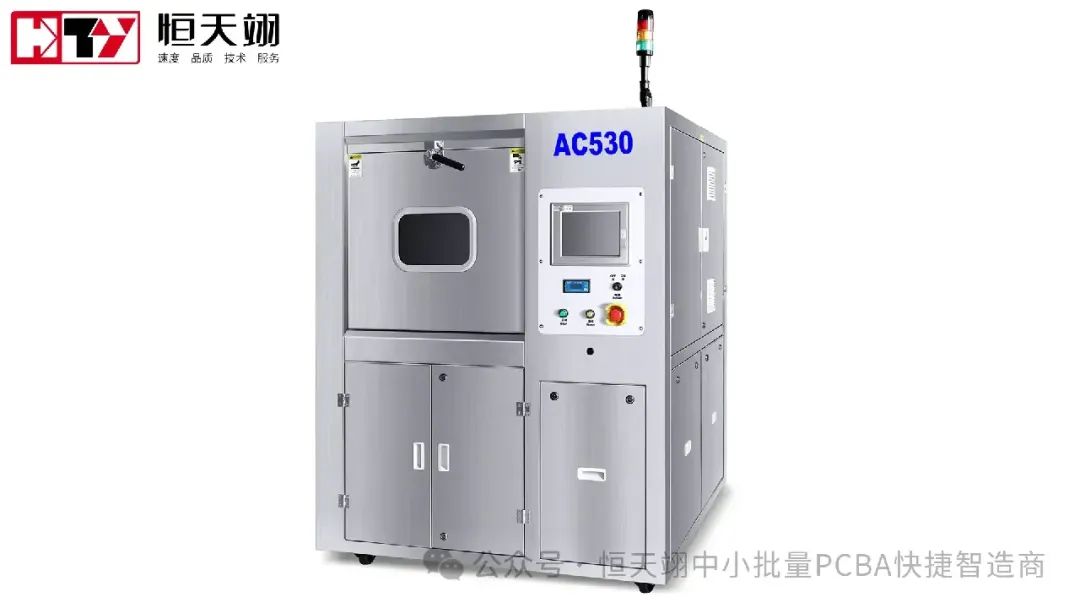
Based on deionized water, with the addition of surfactants or water-based cleaning agents, contaminants are removed through spraying or soaking. Its advantages include being environmentally friendly and low-cost, but it requires a pure water system and wastewater treatment facilities. For example, Hengtianyi employs a circulating pure water system in its cleaning process to ensure efficient use of cleaning agents.
Organic Solvent Cleaning
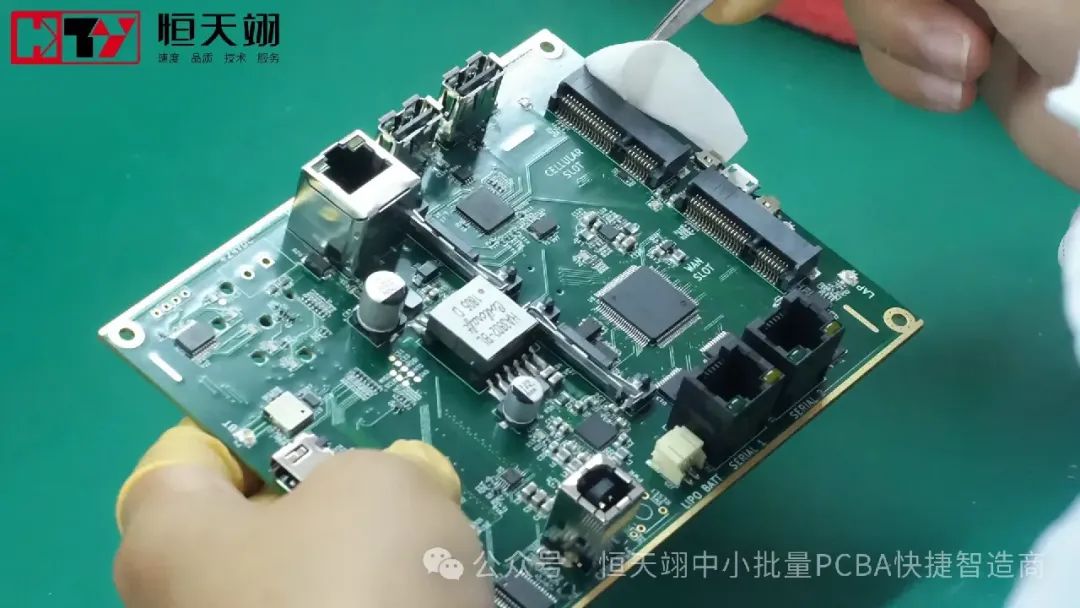
Using alcohol, acetone, or specialized hydrocarbon solvents, organic residues such as rosin and grease are quickly dissolved. The advantage is fast cleaning speed, but there are issues with flammability and volatile organic compound (VOC) emissions, requiring strict control of safety and environmental protection.
Ultrasonic Cleaning
By generating cavitation effects through high-frequency vibrations, the impact of tiny bubbles bursting is used to remove small particles and dirt in hard-to-reach areas. This technology is particularly effective for high-density mounted boards and does not damage components. For instance, Hengtianyi has introduced ultrasonic equipment in precision PCB processing to enhance pad cleanliness.
Dry Ice Cleaning
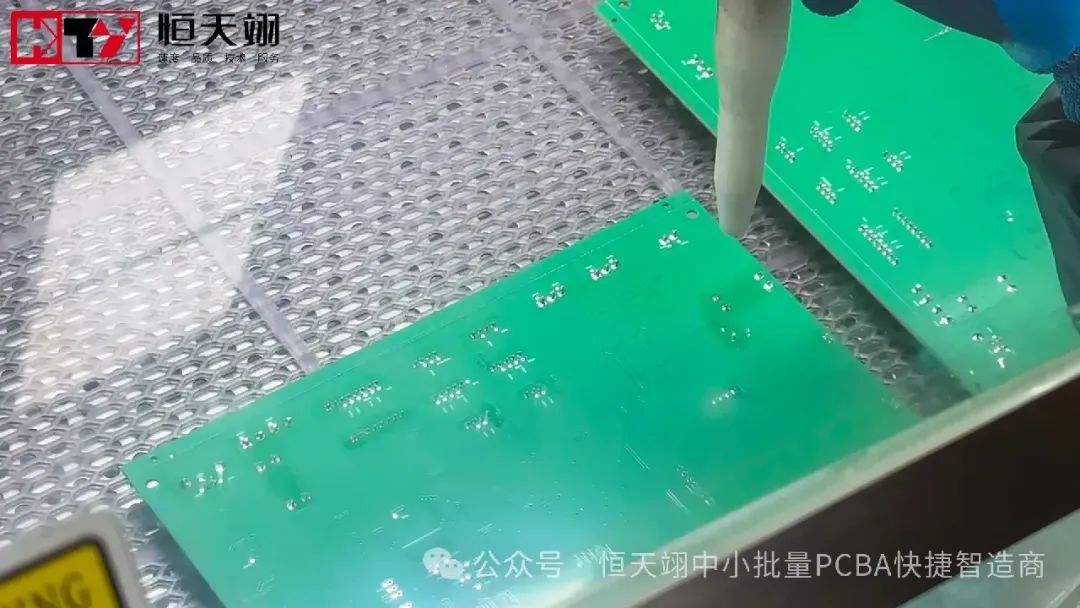
Using solid carbon dioxide particles, contaminants are removed through low-temperature embrittlement and high-speed impact. Its characteristics of no chemical residue and no need for secondary drying make it especially suitable for sensitive components and environmentally demanding scenarios. Some high-end factories have adopted this technology for cleaning military and medical products.
Automated Online Cleaning
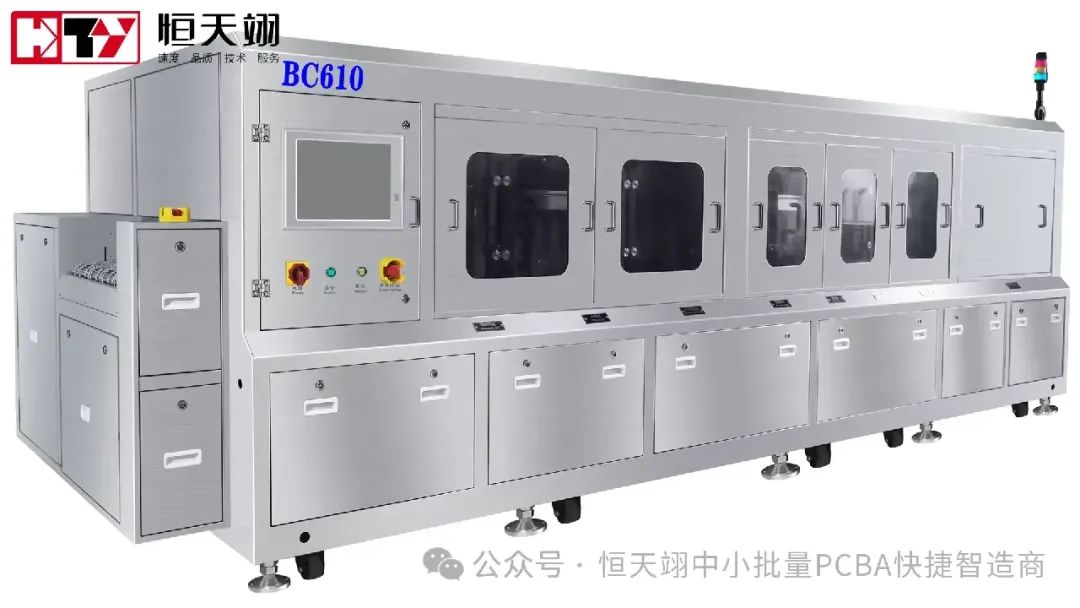
Fully automated equipment integrating spraying, rinsing, and drying functions, suitable for large-scale production. Hengtianyi’s SMT production line is equipped with a programmable cleaning machine, with chain speed controlled at 50~150 cm/min, ensuring efficiency and consistency.
2. Comparison of Cleaning Technologies and Applicable Scenarios
|
Cleaning Method |
Advantages |
Disadvantages |
Applicable Scenarios |
|
Water-based Cleaning |
Environmentally friendly, low cost |
Requires pure water system, complex wastewater treatment |
General consumer electronics |
|
Organic Solvent Cleaning |
Quickly dissolves organic residues |
Flammability, VOC emission risks |
Small batch, high pollution boards |
|
Ultrasonic Cleaning |
No dead angles, high precision |
High equipment investment, large energy consumption |
High-density mounted boards, precision components |
|
Dry Ice Cleaning |
No residue, no drying required |
High equipment cost, strong dependence on particle supply |
Aerospace, medical equipment |
|
Automated Online Cleaning |
Efficient, strong consistency |
High initial investment, complex maintenance |
Large batch standardized production |
From a comprehensive performance perspective,ultrasonic cleaning and dry ice cleaning excel in cleanliness and environmental friendliness, whileautomated online cleaningis more suitable for efficiency-seeking mass production.
3. Hengtianyi Electronics’ Cleaning Practices and Innovations
As a one-stop PCBA service provider, Hengtianyi deeply integrates technological innovation and quality control in its cleaning processes:
Intelligent Cleaning Process
In Hengtianyi’s 25-step PCBA process, the cleaning step is positioned after solder paste printing and reflow soldering, with real-time monitoring of cleaning parameters (such as temperature and chain speed) through the MES system, ensuring stability for each batch of products. The cleaning machine is set to a rinsing temperature of 60±10℃, ensuring effective cleaning while avoiding thermal stress damage.
Environmental Protection and Efficiency
The company uses water-based cleaning agents and pure water recycling technology to reduce hazardous waste generation, while introducing semi-water-based cleaning as a transitional solution to balance safety and cost. For customers with high reliability requirements, Hengtianyi offers customized dry ice cleaning services to meet military-grade standards.
Strictly Adhering toIPC Standards
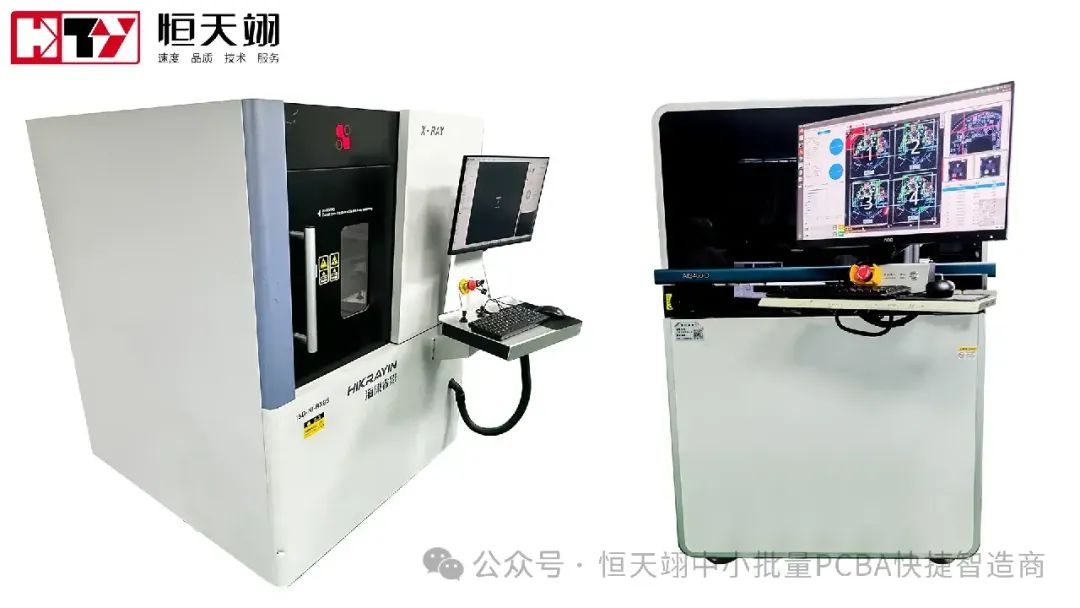
Hengtianyi implements IPC Class II standards, addressing defects such as post-solder residues and misalignment of polar components through dual verification of cleaning effectiveness using AOI (Automated Optical Inspection) and X-ray. Its self-developed MES+ERP system can trace the cleaning records of each PCB, ensuring quality control.
4. Conclusion: Technology Selection Must Fit Production Needs
In summary,ultrasonic cleaning and automated online cleaning are the mainstream choices for current SMT factories, balancing efficiency and cleanliness; whiledry ice cleaning has become the preferred choice for high-value-added products due to its environmental advantages. Hengtianyi Electronics, through multi-technology collaboration and intelligent management, not only achieves “fastest 8-hour prototyping” for efficient delivery but also aims for “zero defects,” promoting the electronics manufacturing industry towards greener and more precise practices. In the future, with the popularization of 5G and IoT devices, innovations in cleaning technology will continue to empower the industry, and Hengtianyi’s practices provide a benchmark example for this.
END

Follow us to stay updated